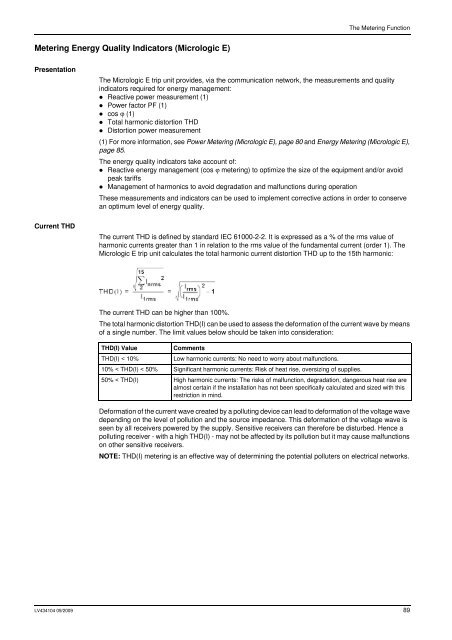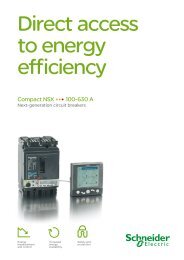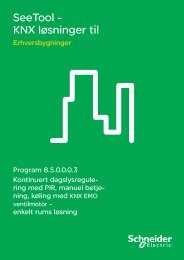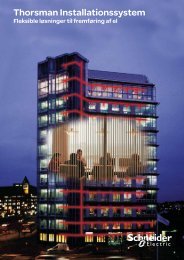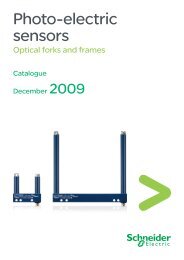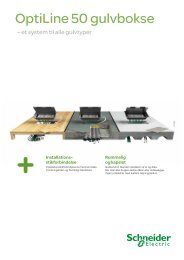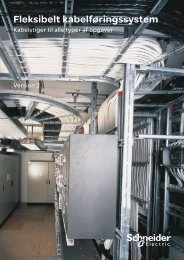User manual 09/2009 - Schneider Electric
User manual 09/2009 - Schneider Electric
User manual 09/2009 - Schneider Electric
You also want an ePaper? Increase the reach of your titles
YUMPU automatically turns print PDFs into web optimized ePapers that Google loves.
The Metering FunctionMetering Energy Quality Indicators (Micrologic E)PresentationThe Micrologic E trip unit provides, via the communication network, the measurements and qualityindicators required for energy management:• Reactive power measurement (1)• Power factor PF (1)• cos ϕ (1)• Total harmonic distortion THD• Distortion power measurement(1) For more information, see Power Metering (Micrologic E), page 80 and Energy Metering (Micrologic E),page 85.The energy quality indicators take account of:• Reactive energy management (cos ϕ metering) to optimize the size of the equipment and/or avoidpeak tariffs• Management of harmonics to avoid degradation and malfunctions during operationThese measurements and indicators can be used to implement corrective actions in order to conservean optimum level of energy quality.Current THDThe current THD is defined by standard IEC 61000-2-2. It is expressed as a % of the rms value ofharmonic currents greater than 1 in relation to the rms value of the fundamental current (order 1). TheMicrologic E trip unit calculates the total harmonic current distortion THD up to the 15th harmonic:The current THD can be higher than 100%.The total harmonic distortion THD(I) can be used to assess the deformation of the current wave by meansof a single number. The limit values below should be taken into consideration:THD(I) ValueCommentsTHD(I) < 10%Low harmonic currents: No need to worry about malfunctions.10% < THD(I) < 50% Significant harmonic currents: Risk of heat rise, oversizing of supplies.50% < THD(I) High harmonic currents: The risks of malfunction, degradation, dangerous heat rise arealmost certain if the installation has not been specifically calculated and sized with thisrestriction in mind.Deformation of the current wave created by a polluting device can lead to deformation of the voltage wavedepending on the level of pollution and the source impedance. This deformation of the voltage wave isseen by all receivers powered by the supply. Sensitive receivers can therefore be disturbed. Hence apolluting receiver - with a high THD(I) - may not be affected by its pollution but it may cause malfunctionson other sensitive receivers.NOTE: THD(I) metering is an effective way of determining the potential polluters on electrical networks.LV434104 <strong>09</strong>/20<strong>09</strong> 89


